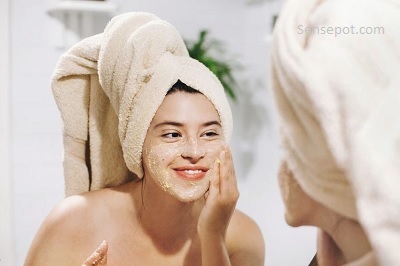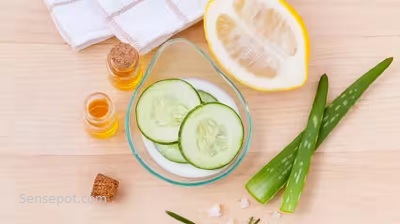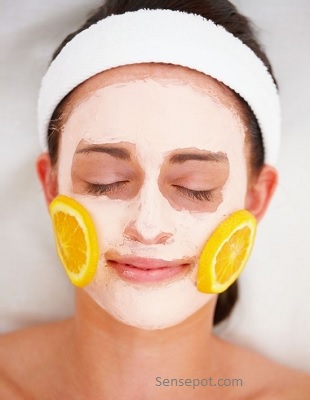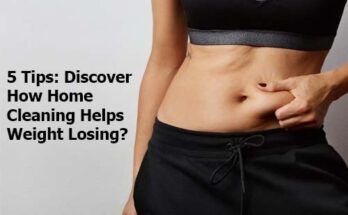The Best Acne Scar Home Treatments of 2023. The eternal struggle with skin rashes is a problem that, according to statistics, approximately 85% of people aged 12 to 25 face. Of course, you can refer to the hormonal changes in the body and console yourself with the fact that this will all pass soon. But now you are already 30, the hormonal background is as stable as ever, but acne is in no hurry to leave the skin. Unfortunately, rashes can haunt you at any age, and this is even more annoying! What to do, what means will help say goodbye to acne and its traces after it? Just on this topic and offer to talk.

Like this article if you are also constantly struggling with rashes and looking for effective methods to deal with them.
Causes of acne
Acne is one of the three most common skin diseases. It occurs due to clogging of pores with sebum and dead skin cells. Bacteria quickly run to this whole feast, and leukocytes are trying at this moment to attack uninvited guests. As a result of this confrontation, inflammatory processes, and acne appear. In addition, the causes of acne may include the following:
- Hormonal changes. One of the common causes of acne and blackheads is the hormone dihydrotestosterone, which is produced by both women and men. Its concentration increases during puberty and decreases after puberty. It is during this period that excess sebum production occurs, which leads to the appearance of rashes. In addition, there are several endocrine diseases that cause the same problems with the epidermis but are already at a more mature age.
- Nutrition. Everyone is talking about it and we cannot remain silent. Excessive consumption of sweets (including sugary carbonated drinks), dairy products, fast food, fatty foods, and baked goods increases the risk of acne and exacerbation.
- Genetic predisposition. Unfortunately, there’s no getting around this. You have to come to terms with the hereditary factor and learn how to work with the existing problem.
- Stress. It is no secret that it is psycho-emotional stress that more often causes exacerbation of chronic diseases, can provoke the emergence of new ones, and also affect your face in the form of small red rashes.
- Medications. Indeed, taking certain medications can cause acne or other types of rashes. These include corticosteroids, lithium, anticonvulsants, barbiturates, steroids, etc.
- Diseases of the gastrointestinal tract. The skin is the mirror of our body. It is she who can acutely signal the presence of problems with the gastrointestinal tract.
Based on all of the above, one simple conclusion can be drawn – acne treatment must begin with a search for the cause of its occurrence.
How to Get Rid of Acne
Most often, rashes appear on the face: on the forehead, chin, cheeks, and nose. As an emergency solution to the problem, you can try the following methods:
1. Salicylic acid. It belongs to the most affordable and working means. Salicylic acid has antibacterial, anti-inflammatory, and healing properties. Suitable for fighting acne and comedones. It should be used with extreme caution, as there is a risk of getting burned or overdrying the skin. Salicylic acid with a concentration of 1-2% is suitable for use, but no more. It is recommended to apply the product pointwise.
Quite often, salicylic acid is used in conjunction with glycolic, folic, or boric. This combination allows you to achieve the effect of peeling. As a result of the application, inflammatory processes are reduced, the number of rashes is reduced and the process of skin regeneration is activated.
You can also get DIY Hair Masks: Natural Treatments for Healthy Hair {2023}
Please note that salicylic acid is not suitable for dry and sensitive skin. It works most effectively with the bold type.
2. Essential oils. Give preference to those that have antibacterial and anti-inflammatory properties. For this, tea tree oil, cinnamon, rose, lavender, and cloves are suitable. Again, we are talking about point application.
3. Talker. This is a proven tool that absolutely everyone knows about. There are a huge number of ways to prepare it, but the basic components must be unchanged – an antibiotic and an anti-inflammatory drug.
4. Face mask of honey and cinnamon. One study showed that these two components have antibacterial properties and inhibit the activity and growth of acne-causing bacteria. To prepare this mask, you need to mix 2 tablespoons of honey with 1 teaspoon of cinnamon. Mix everything thoroughly until a homogeneous mass is formed. Cleanse your face well and apply the mask for 10-15 minutes. Then just wash it off and pat your face dry.
5. SOS-means. To quickly remove subcutaneous acne, point remedies can come to the rescue. What we recommend paying attention to:
- Local anti-inflammatory gel for the face Real Barrier Control-T Spot Gel with tea tree oil;
- Clarins My Clarins Clear-Out Targets Imperfections Acne Gel with Purslane and Meadowsweet Extract;
- Active face gel SVR Sebiaclear Cicapeel Active Gel with gluconolactone and salicylic acid;
- Elizavecca Witch Piggy Hell-Pore Blemish Spot Patch is designed to reduce inflammation and redness, as well as to accelerate the process of pimple formation.
- Some By Mi Clear Spot Patch softens the surface of a pimple and absorbs its contents. Remove redness, destroy bacteria, and heal the skin.
Home Remedies for Acne Scars
Having acne-prone skin, there is a high probability that the rash will begin to haunt other parts of the body:
- On the hands (most often on the shoulders);
- On the back;
- On the chest.
Those who have already encountered this know for sure that getting rid of acne on the body is much more difficult than on the face. By and large, you can also use pointwise means that are described above salicylic acid, essential oils, and talkers. But do not forget that the skin on the body requires a slightly different approach. What do we recommend?

- Shower gel for problem skin. Yes, there is such a thing. True, the choice will not be so big, but it will work out to choose the right tool for yourself. Many use regular facial gels designed for problem skin, but you need to be prepared for the fact that the expense of the product will be large, and this is not financially profitable.
- Soft body scrub. It is important to exfoliate particles of dead skin cells so that they do not clog pores and do not lead to inflammatory processes and the formation of acne. Alternatively, consider a scrub gel or shower gel peel.
- Oil-free and fragrance-free lotion. Any skin, including problematic, requires hydration and nourishment. In order not to overdry it and not provoke more active production of sebum, use pharmacy dermatocosmetice. It, as a rule, has safe components in its composition, does not cause allergies, and does not clog pores.
- Change bedding frequently. No matter how hard you try to keep clean, bacteria are still waiting for you and you do not expect them. The same applies to clothing.
- Hypoallergenic laundry detergents. To minimally irritate the skin, you need to choose a washing powder or gel that will not have strong fragrances and an aggressive composition.
Such simple tips can greatly help in the fight against rashes on the body.
Over-the-Counter Treatments
Do not press or scratch – one of the main rules for the treatment of rashes. But let’s be honest, a very low percentage of people adhere to it. When squeezing out acne, the integrity of the epidermis is violated, a wound appears, and after it a scar in the form of a dark spot. It will not be possible to get rid of it in one day, it may even take more than one week for this. You should not get upset prematurely, since it is quite possible to lighten the skin and stimulate regeneration processes.
There are a lot of tips on the Internet on how to permanently get rid of acne spots at home. But I would like to note that most of these recommendations are built around things like baking soda, lemon juice, turmeric, etc. Now think about what will happen to your skin after applying them. It is unlikely that she will like it, especially on the condition that to achieve a noticeable result, you need to undergo a course of such procedures.

As an alternative, care products that contain a concentration of active substances that are safe for your skin are perfect.
What can be used to remove post-acne at home? Masks, creams, home peels, and tonics with the following components will cope with this task:
- Salicylic acid. Yes, yes, yes, she is the best. This is a universal remedy for both fighting rashes and removing traces after them. Important! People with sensitive skin should apply a small amount to the skin to avoid excessive dryness and irritation.
- Retinoids. These vitamin A derivatives not only help to get rid of acne scars, but they also fight breakouts, care for youthful skin and lighten age spots. These products increase the sensitivity of the skin to the sun. Therefore, use retinoids in the evening, and apply sunscreen in the morning.
- Alpha hydroxy acids (Alfa-Hydro-Acid – AHA), are also called fruit acids. They can speed up the process of skin renewal, so they are often recommended for treating acne and evening complexion.
- Lactic acid. It acts quite delicately, removing dead skin cells. The great advantage of such products is that they can lighten even dark scar tissue, and this fact is confirmed by one of the studies. Lactic acid is quite often used to even out the tone of the face, so it should be included in our list of skin care products that you can use at home.
Now you have a complete guide to getting rid of acne and acne marks at home. However, in any case, we strongly recommend that you first contact a dermatologist, since using external means, the problem will simply be masked, but it will not go anywhere and can return at any time.
Share your secrets of problem skin care in the comments, perhaps they will help someone say goodbye to acne.
FAQs
How long does it take to get rid of acne and acne scars?
The time it takes to get rid of acne and acne scars varies from person to person. It can take anywhere from a few weeks to a few months, depending on the severity of the condition and the treatment used.
Can diet affect acne?
Yes, certain foods can trigger acne, such as dairy, high-glycemic-index foods, and foods high in saturated fats. Eating a healthy, balanced diet can help prevent acne.
Is it safe to pop pimples?
No, it is not safe to pop pimples as it can lead to infection, scarring, and more acne. Instead, try using topical treatments or consult a dermatologist for professional help.
How often should I exfoliate my skin?
Exfoliating your skin once or twice a week is sufficient to remove dead skin cells and unclog pores. However, over-exfoliating can damage the skin, so it’s best to avoid doing it too frequently.
When should I see a dermatologist for acne?
If over-the-counter treatments are not effective in treating your acne, or if you have severe acne or acne scars, it’s best to see a dermatologist. They can provide professional treatment and advice to help you achieve clearer, healthier skin.


